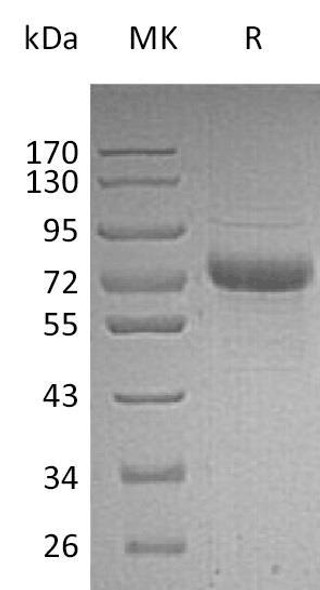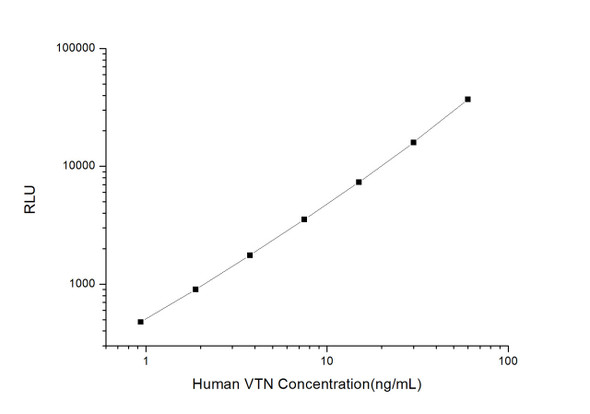Description
| Product Name: | Recombinant Human Vitronectin/VTN (N-Truncated, C-6His) |
| Product Code: | RPES6218 |
| Size: | 10µg |
| Species: | Human |
| Expression Host: | HEK293 Cells |
| Synonyms: | Complement S-protein, epibolin, Serum Spreading Factor, Serum-spreading factor, Somatomedin B, S-protein, V75, Vitronectin, VN, VNT, VTN |
| Mol Mass: | 48.3 kDa |
| AP Mol Mass: | 60-70 kDa |
| Tag: | C-6His |
| Purity: | > 90 % as determined by reducing SDS-PAGE. |
| Endotoxin Level: | < 1.0 EU per μg of the protein as determined by the LAL method. |
| Bio Activity: | Testing in progress |
| Sequence: | Val62-Leu478 |
| Accession: | AAH05046.1 |
| Storage: | Generally, lyophilized proteins are stable for up to 12 months when stored at -20 to -80°C. Reconstituted protein solution can be stored at 4-8°C for 2-7 days. Aliquots of reconstituted samples are stable at < -20°C for 3 months. |
| Shipping: | This product is provided as lyophilized powder which is shipped with ice packs. |
| Formulation: | Lyophilized from a 0.2 μm filtered solution of PBS, pH 7.4. Normally 5 % - 8 % trehalose, mannitol and 0.01% Tween80 are added as protectants before lyophilization. Please refer to the specific buffer information in the printed manual. |
| Reconstitution: | Please refer to the printed manual for detailed information. |
| Background: | Vitronectin, also known as VTN, is a large glycoprotein found in blood and the extracellular matrix (ECM). Vitronectin is a plasma glycoprotein implicated as a regulator of diverse physiological process, including blood coagulation, fibrinolysis, pericellular proteolysis, complement dependent immune responses, and cell attachment and spreading. Blocking of Hic(a member of the pneumococcal surface protein C (PspC) family) by specific antiserum or genetic deletion significantly reduced pneumococcal binding to soluble and immobilised vitronectin and to Factor H, respectively. In addition, Vitronectin interact with glycosaminoglycans and proteoglycans. Is recognized by certain members of the integrin family and serves as a cell-to-substrate adhesion molecule. Inhibitor of the membrane-damaging effect of the terminal cytolytic complement pathway. |






